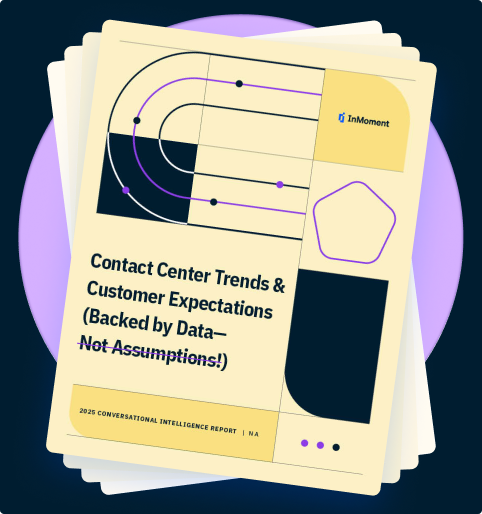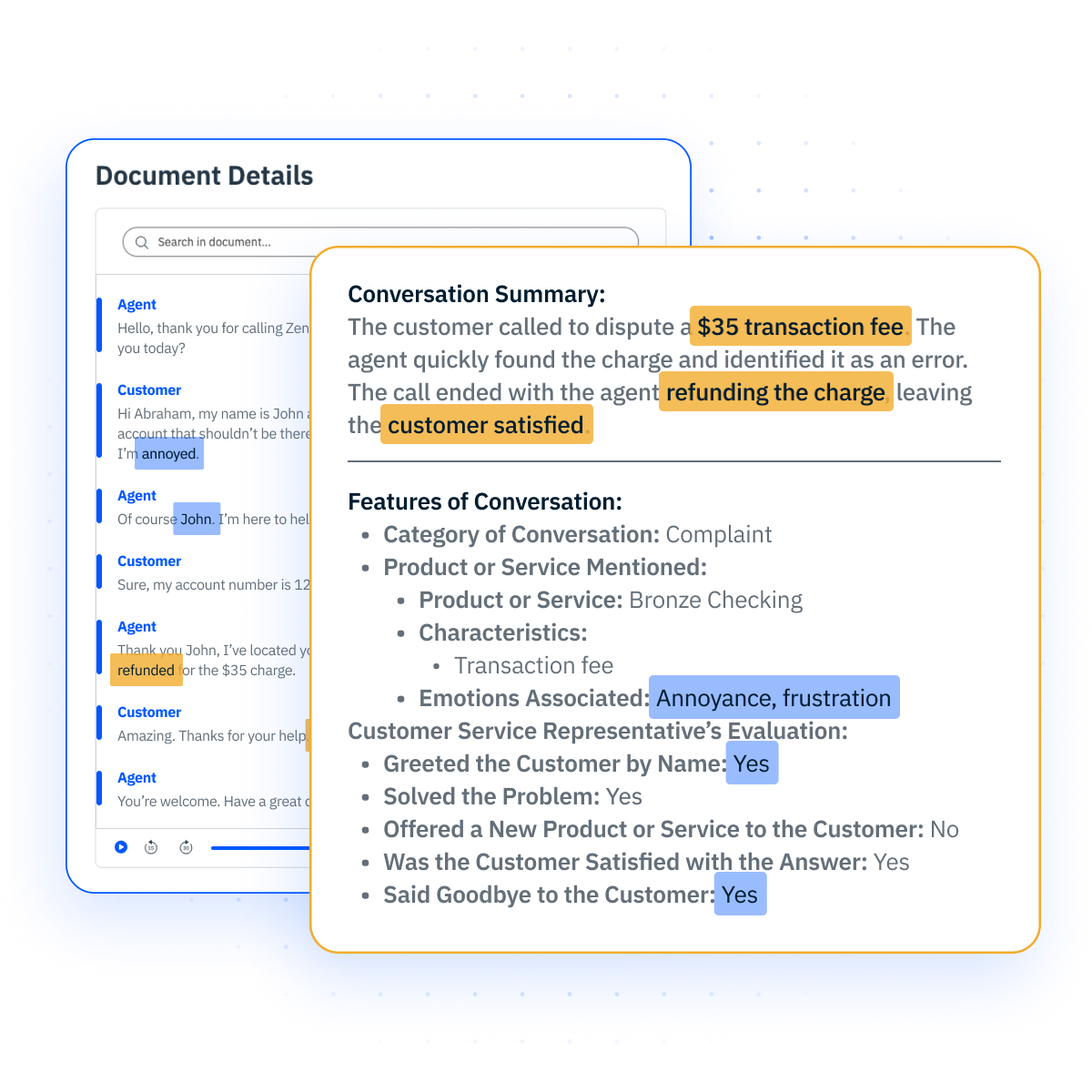Using Omnichannel Contact Center to Drive Customer Satisfaction

Contact centers are not new by any means. As a matter of fact, the first employed call center agents date back to the 1950s. But, these agents only made and received phone calls. It wasn’t until the turn of the century that these call centers evolved into multichannel contact centers. However, even these are quickly becoming obsolete. The future of the contact center lies in the omnichannel contact center.
What is an Omnichannel Contact Center?
An omnichannel contact center is a customer service model that integrates and manages various communication channels in a unified and seamless manner. Unlike traditional multichannel setups, where each communication channel operates independently, an omnichannel contact center provides a cohesive and consistent customer experience across all channels.
What’s the Difference Between Omnichannel and Multichannel Contact Center?
In an omnichannel contact center, customers can interact with a business through channels such as phone calls, emails, chat, social media, and more. What distinguishes it from multichannel systems is the integration of these channels, allowing customers to switch between them without losing the context of their interactions. For example, a customer might start a conversation via chat and then continue it later over the phone, with the contact center retaining the history and context of the entire interaction.
Is an Omnichannel Contact Center Better Than A Multichannel Contact Center?
The debate between an omnichannel contact center and a multichannel contact center often revolves around the depth and quality of customer experience. While both models involve managing customer interactions across various channels, there are distinct differences in their approaches.
While a multichannel contact center provides various communication options, an omnichannel contact center is better positioned to meet the heightened expectations of today’s customers. It not only offers diverse channels but integrates them seamlessly, creating a unified and customer-centric approach that fosters satisfaction and loyalty. Ultimately, the choice between the two models depends on the organization’s commitment to delivering a superior customer experience.
What are the Benefits of an Omnichannel Contact Center?
Embracing strategies that bolster omnichannel contact centers facilitates the delivery of seamless, convenient, and efficient customer interactions. Through the integration of various communication channels into a cohesive system, businesses can enjoy a host of benefits that greatly elevate the customer experience.
Enhanced Customer Engagement
Omnichannel contact center solutions empower businesses to engage with customers on their terms. Whether a customer prefers email, phone, chat, or social media, an omnichannel system seamlessly integrates all these channels, allowing for consistent, real-time interactions. When customers can switch between channels without losing context, it reduces frustration and leads to a more positive experience.
Imagine a customer who initiates a support request through chat but needs to step away. With an omnichannel system, they can easily switch to a phone call later, and the agent will already have the chat history, avoiding the need to repeat the issue. This level of flexibility and continuity in customer feedback fosters better relationships and builds trust.
Efficient Closed-Loop Systems
In a contact center, the value of closing the loop is of the utmost importance. Omnichannel solutions can greatly improve the efficiency of closed-loop systems within a business. When agents have access to a unified view of customer data and interaction history across all channels, they can quickly understand the context of the customer’s issue. This is a crucial element of customer experience management as it ensures that no customer concern or query falls through the cracks and that each issue is tracked from initiation to resolution.
Omnichannel contact center solutions can also incorporate automation and AI-powered tools. These technologies can intelligently route customer inquiries to the most appropriate agent or department. For instance, a chatbot can handle routine queries, while complex issues are directed to specialized human agents. This streamlines the resolution process, ensuring that customers get the help they need as quickly as possible.
Consistent Brand Experience
Consistency is a key factor in creating a strong and recognizable brand. Omnichannel contact center solutions enable businesses to deliver a consistent brand experience across all customer touchpoints. From the tone of communication to the information provided, customers should feel that they are dealing with one unified entity, not a collection of disconnected departments.
This consistency helps to reinforce brand loyalty and trust. Whether a customer is engaging on social media, talking on the phone, or visiting a physical store, the brand experience should remain uniform. Omnichannel solutions can help achieve this by ensuring all customer-facing teams have access to the same information and guidelines for interacting with customers.
Data-Driven Insights
Omnichannel contact center solutions provide valuable data and analytics. By collecting and analyzing customer interactions across various channels, businesses gain insights into customer preferences, pain points, and behavioral patterns. These insights can inform strategic decisions, improve product and service offerings, and enhance the overall customer experience.
Data-driven insights also allow for more personalized interactions. When agents have access to a customer’s history and preferences, they can tailor their responses and recommendations, creating a more personalized and meaningful interaction. This not only improves the customer experience but can also lead to increased sales and customer retention.
What Does an Omnichannel Contact Center Solve?
An omnichannel contact center addresses several challenges and issues in customer service and provides solutions to enhance the overall customer experience. Here are key problems that an omnichannel contact center aims to solve:
Customer Friction
- Issue: In a multichannel environment, customers may experience friction when transitioning between different channels, leading to a disjointed and frustrating experience.
- Solution: Omnichannel contact centers eliminate friction by offering a seamless and consistent experience across all communication channels. Customers can switch between channels without losing context or having to repeat information.
Operational Efficiency
- Issue: Multichannel centers may struggle with the inefficiency of managing different channels separately, leading to delays, errors, and increased workload.
- Solution: Omnichannel contact centers centralize communication management, improving operational efficiency. Agents can access all channels from a unified dashboard, streamlining processes and reducing the risk of information silos.
Enhanced Insights
- Issue: Siloed data from separate channels can make it challenging to gain a comprehensive understanding of customer behavior and preferences.
- Solution: Omnichannel systems provide a holistic view of customer interactions, allowing businesses to gather valuable insights. This data-driven approach enables informed decision-making and the ability to tailor services to customer needs.
Features to Look for in an Omnichannel Contact Center
When deciding on omnichannel contact center solutions, there are many things to consider. The functionalities you need will be dependent on the uses and goals of your contact center. Regardless, there are a few main features that any successful contact center should have.
Agent Scorecards
Agent Scorecards are tools that provide a comprehensive evaluation of an individual agent’s performance within the contact center. These scorecards typically encompass a range of key employee and customer experience KPIs and metrics specific to the agent’s responsibilities. Metrics may include factors like average handling time, first contact resolution, customer satisfaction scores, and adherence to scripts or guidelines. By analyzing these metrics, managers gain insights into an agent’s efficiency, effectiveness, and overall contribution to the customer experience.
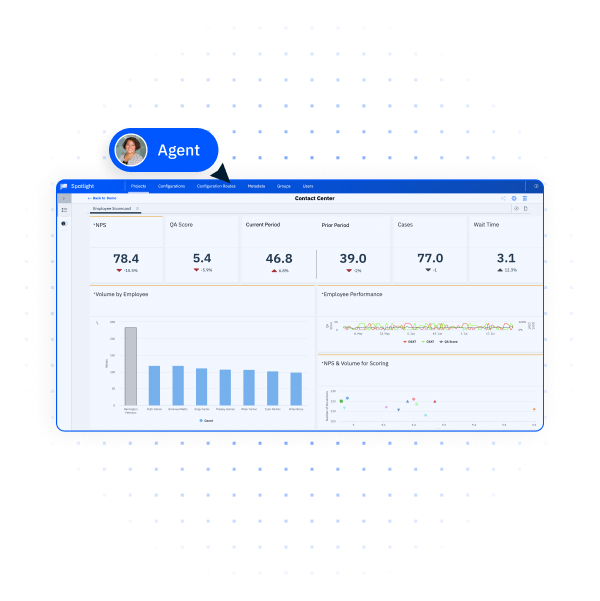
AI-Driven Text Analytics
AI-Driven Text Analytics refers to the application of artificial intelligence and machine learning techniques to analyze and derive meaningful insights from unstructured text data. In the context of an omnichannel contact center, unstructured data often includes customer interactions from various sources, such as emails, chat transcripts, social media comments, and survey responses. Traditional analysis of such data can be time-consuming and challenging due to its unstructured nature, but AI-driven solutions bring efficiency and accuracy to the process.
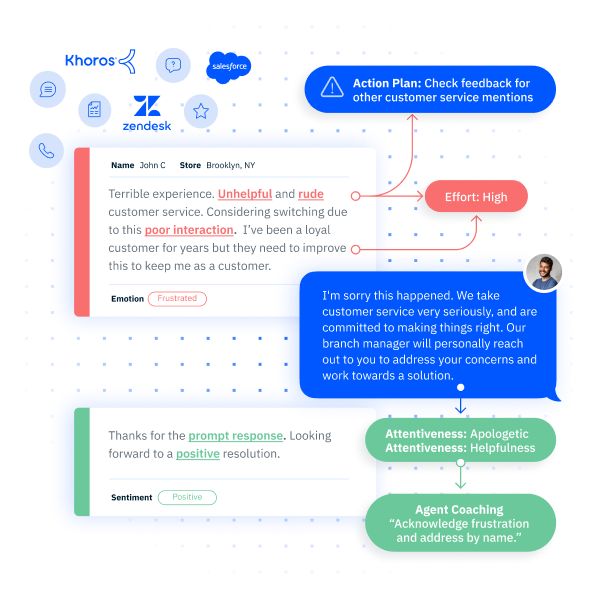
Transcription Services
Contact centers often deal with a significant volume of audio data, including customer service calls, feedback voicemails, and internal meetings. Manually processing and analyzing these recordings can be time-consuming and impractical. Transcription services streamline this by converting hours of audio content into text, making it more manageable for further analysis and exploration. This process is essential for making audio content accessible, searchable, and analyzable.
Quality Assurance
Quality Assurance in a contact center involves systematic monitoring and evaluation of customer interactions to ensure that they meet predefined standards of excellence. This process encompasses various elements, including adherence to scripts, accuracy of information provided, adherence to company policies, and the overall effectiveness of customer service.
Strategic Services
Strategic Services in an omnichannel contact center context involve a suite of specialized offerings designed to provide businesses with expert guidance and actionable insights. Engaging in strategic services allows businesses to tap into the expertise of professionals who specialize in optimizing contact center operations. These experts often have a deep understanding of industry trends, best practices, and emerging technologies. These services also include the provision of detailed and customized reports that dive into contact center analytics and answer key business questions. These questions could revolve around performance metrics, customer satisfaction, operational efficiency, and other critical aspects of contact center management.
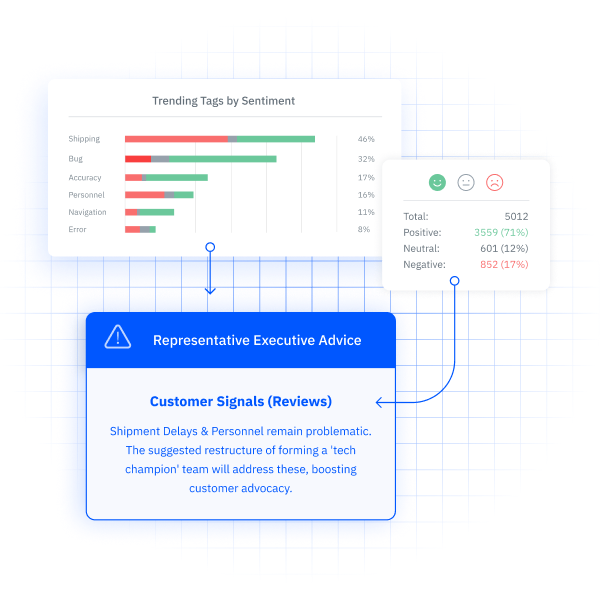
Omnichannel Contact Center Examples
Numerous organizations across various industries have successfully implemented omnichannel contact centers to enhance customer experiences and streamline communication across multiple channels. To represent the practical uses of an omnichannel contact center solution, let’s examine two customers in two different industries.
Financial Services
A customer, Sarah, encounters an issue with a recent credit card transaction. She notices an unauthorized charge on her credit card statement and is concerned about potential fraud.
The Omnichannel Solution:
- Mobile App Investigation: Sarah logs into the mobile banking app to review her recent transactions. The app provides detailed information about each transaction, allowing her to identify the unauthorized charge.
- In-App Chat Support: Using the in-app chat support feature, Sarah initiates a conversation with a customer support representative. She explains the issue and provides details about the unauthorized transaction.
- Live Video Call Option: The customer support representative, recognizing the sensitivity of the issue, suggests initiating a live video call through the mobile app. This allows Sarah to show any supporting documents or ID verification directly.
- Context Preservation: Throughout the interaction, Sarah’s information and conversation history are seamlessly transferred from the mobile app to the video call, ensuring that she doesn’t need to repeat information and that the context is preserved.
- Resolution and Follow-Up: The representative investigates the issue in real-time, verifies Sarah’s identity, and resolves the unauthorized charge. During the video call, the representative guides Sarah through the steps to secure her account and provides assurance. Follow-up communications are sent through secure channels, ensuring privacy.
In this financial services scenario, the omnichannel contact center enables a smooth and secure resolution for the customer, utilizing mobile app features, chat support, and live video calls to address the issue comprehensively.
Retail
Omnichannel contact centers can also succeed in other industries. Let’s say John, a retail customer, purchases a laptop online from a retail store. Unfortunately, the laptop arrives with a defect, and John needs assistance with returning and replacing the product.
The Omnichannel Solution:
- Live Chat Support: Using the website’s live chat support, John initiates a conversation with a customer service agent. He explains the issue with the defective laptop and requests assistance with the return and replacement process.
- Email Correspondence: To provide supporting documentation, John uploads pictures of the defective product through the live chat. The customer service agent suggests continuing the conversation via email to maintain a documented trail.
- In-Store Return Option: The retailer’s omnichannel strategy includes an option for in-store returns. The customer service agent provides John with the option to return the defective laptop at a nearby physical store for quicker resolution.
- Context Transfer: When John visits the physical store, the in-store staff has access to the email correspondence and live chat history, ensuring a seamless continuation of the resolution process. John doesn’t need to re-explain the issue.
- Replacement Process: The in-store staff processes the return, facilitates the replacement of the laptop, and ensures that John leaves the store with a fully functional product. Any additional communications or confirmations are sent via email for John’s records.
In this retail scenario, the omnichannel contact center facilitates a convenient and efficient resolution for the customer, utilizing online order tracking, live chat support, email correspondence, and in-store returns to address the issue effectively.
Develop Your Omnichannel Contact Center
With InMoment’s omnichannel contact center software, you can house all your data in one place. This capability allows you to deliver consistent, quality, and customer-centric experiences. Schedule a demo to see what InMoment can do for you.

